Index

Review: New Kit on the block
While testing the ASUS Blitz Extreme board we had a chance to test the latest Patriot 2GB DDR3 Kit called PDC32G1333LLK, which comes with two 1GB modules.
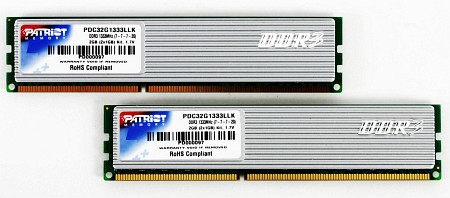
This Kit comes with the typical Patriot heatspreaders, it's rated at 1.7V, nothing special for a 1333MHz kit. The timings are quite standard, CL7-7-7-20. During our tests the heatspreaders did not heat up much.
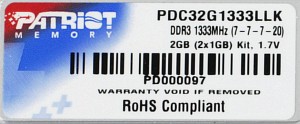
While low latencies do not imply it will run faster than the higher ones, it all depends on the mainboard you are using. The ASUS P5K3 Deluxe could run faster with CL9 and Boost 3, while the Blitz Extreme refused to run faster than Boost 0, but had no troubles using CL7.
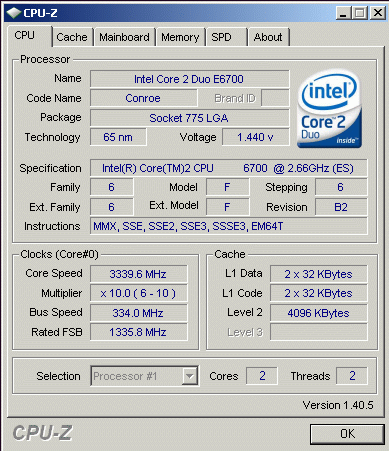
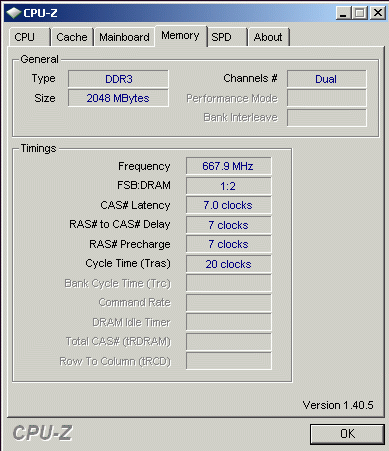
The memory is rated at 1333MHz and overclocking depends on the mainboard. Our ASUS Blitz refused to run with 1500MHz, even with higher voltage, relaxed timings and deactivated boost.
[Update: October 7h, 2007]: We managed to run with 1500MHz, it was a bit tricky but it is possible :-)
We run all standards test with AUTO settings, but for our last bench we tweaked the BIOS. If you don't know what you are doing, you should avoid BIOS settings as it may ruin your Windows installation during booting. We are sure this kit could do better with other boards or more tweaking, maybe a new BIOS would help, too.
Testbed:
Motherboard:
ASUS Blitz Exterme (provided by ASUS)
Intel P35/iCH9R
CPU:
Intel Core 2 Duo E6700 (provided by Intel)
CPU-Cooler:
Scythe Andy Samurai Master (provided by Scythe-Europe)
Memory:
Patriot 2GB Kit PC3-10666U PDC32G1333LLK (provided by Patriot)
CL7-7-7-20-CR2T at 1.70V
Graphics Card:
AMD ATI Radeon X1950XTX (provided by AMD)
Power supply:
Silverstone Element SF50EF-Plus (provided by Silverstone)
Hard disk:
Western Digital WD4000KD (provided by Ditech)
Case fans:
SilenX iXtrema Pro 14dB(A) (provided by PC-Cooling.at)
Scythe DFS122512LS
For memory reviews we use synthetic benchmarks, so we can better compare them to real world applications.
The kit does not run faster compared to DDR2, but with some BIOS optimizing you can improve it greatly.

Everest benchmarks shows no significant differences. Of course higher clockspeed can improve the rates, we compared scores only at the same CPU-speed.
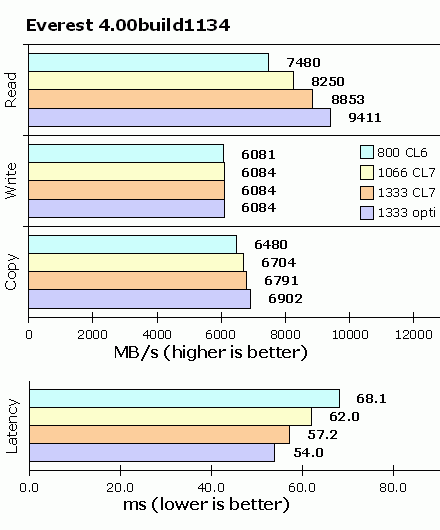
Everest also benchmarks the latency; higher clocks means more latency, but low frequency with low latency needs higher latency on the chipset, which increases access latency substantially. On our board the chipset latency was locked with "Boost 0" settings, so only the frequencies were altered. For the optimized bench we set the FSB-strap to 266 instead of 333, which improved the speed greatly.
You can see for yourself how the results are affected when using a memory intensive program, such as Gordian Knot:
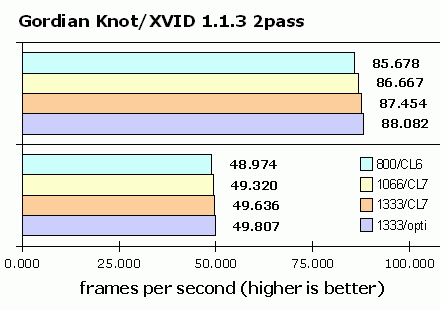
Conclusion:
We have no complaints, the kit worked without problems. To gain the optimum speed you need to tweak your BIOS, because AUTO settings won't give you the best transfer rates possible. In our Gordian Knot benches you can see that the performance gain at 1333MHz compared to 1066MHz is only 1.5fps. In applications where memory is not a major concern the difference will be negligible.
The only complaint is the price. While 2GB DDR2 kits are below €80/$100, you have to pay more than 4x the price to get DDR3. In Europe you can buy the kit for about €410,-
DDR3 is far too expensive to justify the upgrade for now. We are eagerly awaiting the promised 2000MHz kits, but we fear they will only provide a very small improvement at a much higher price.
